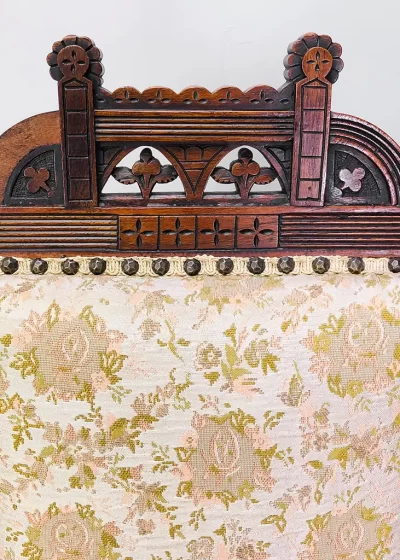Victorian
A Symphony of Ornament: Unveiling the Victorian Aesthetic
Victorian England, a time of empire, industry, and rampant innovation, pulsated with a distinct rhythm in the realm of aesthetics. It was an era where beauty met opulence, where intricate details danced with bold color, and where every object, from furniture to fashion, became a canvas for elaborate storytelling. This, my friends, is the melody of the Victorian aesthetic, a symphony of ornament that continues to captivate and inspire.
First Notes: Gothic Reverie and Romantic Flourishes:
The early Victorian period, steeped in the shadows of Gothic Revival, embraced drama and mystery. Furniture donned dark woods and carved gargoyles, while wallpapers whispered tales of haunted castles and brooding landscapes. Romanticism, too, lent its voice, with floral motifs, nature-inspired patterns, and a touch of sentimental whimsy gracing drawing-rooms and parlors. This was a time where imagination reigned supreme, painting every corner with rich and evocative strokes.
The Grand Crescendo: Mid-Victorian Flourish and Industrial Opulence:
As the Victorian era reached its golden age, the aesthetic crescendoed. Technological advancements fueled an explosion of decorative possibilities. Steam-powered looms birthed lavishly patterned textiles, while glassmaking innovations led to shimmering chandeliers and ornate stained glass windows. Furniture burst with ornate carvings, gilded embellishments, and upholstery in jewel tones. This was a time of ostentatious display, where wealth and status were proudly proclaimed through the language of ornament.
East Meets West: The Allure of the Exotic:
Victorian curiosity extended beyond its borders, embracing the allure of the East. Chinoiserie wallpapers featuring pagodas and dragons adorned walls, while Japanese-inspired ceramics and furniture added a touch of Zen calm to the bustling interiors. This fascination with the exotic broadened the aesthetic palette, infusing spaces with a sense of global intrigue and cultural exchange.
More Than Mere Decoration: Storytelling in Every Stitch:
But the Victorian aesthetic wasn’t simply about ornate surfaces. It was a storytelling symphony, where every detail held a hidden meaning. Floral patterns might symbolize purity and innocence, while animal motifs represented specific traits and virtues. Even furniture placement and room arrangements were carefully choreographed to weave narratives of social hierarchy and domestic harmony. This was a time where beauty had a deeper purpose, guiding behavior and reflecting the aspirations of an ambitious and complex society.
Echoes in the Modern World:
The Victorian aesthetic, though distinctly of its time, continues to resonate in the 21st century. Modern designers find inspiration in its bold colors, intricate patterns, and playful layering of textures. Vintage enthusiasts cherish the craftsmanship and storytelling woven into antique pieces. And in a world increasingly dominated by minimalism, the Victorians’ unabashed love for ornament serves as a vibrant reminder of the power of detail and the transformative potential of beauty.
Showing the single result


